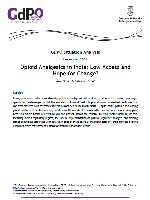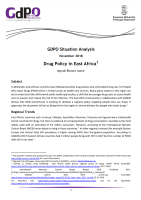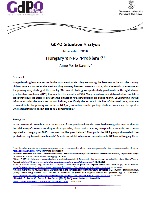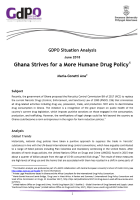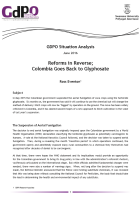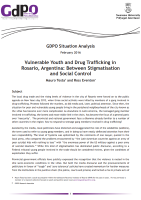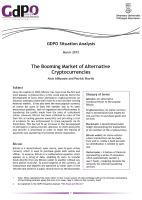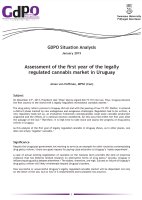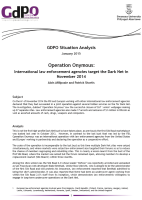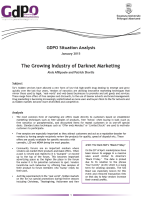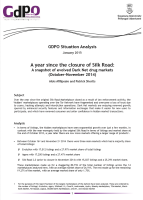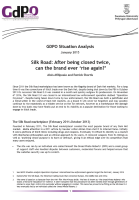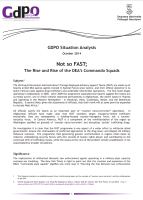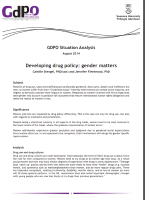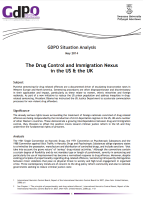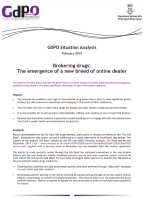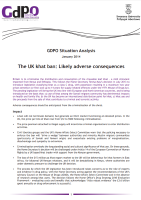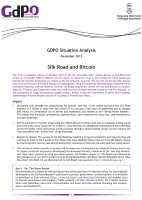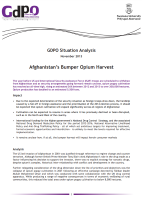
GDPO Situation Analysis July 2014
In early 2014, coming off the back of record levels of illicit crops destroyed over the previous year, the Peruvian government announced that it would be increasing eradication targets for the forthcoming year by around 30%. Assisted by significant funding from Washington D.C., the plan included a militarised eradication offensive in a region where Shining Path insurgents were present — the Apurimac and Ene river valley, sometimes referred to by the Spanish acronym VRAE (see map below) — and where, the government says, just over half of Peru’s cocaine is produced. The programme ran for five months. Then, in a surprise move, the country’s drug czar was fired and replaced by a former defence minister, and the President, Ollanta Humala, made a televised appearance to declare the suspension of forced eradication operations in the region. Crop destruction would continue elsewhere, he said, but in the Apurimac and Ene river valley the government would instead rely, for now, on alternative development programmes. The change in personnel and the temporary suspension of eradication do not seem to be indicative of a fundamental change of direction. The government approach remains predominantly prohibition-oriented and militarised, and counter-insurgency considerations - the threat of violence and of pushing local peasants towards the Shining Path guerillas — seems to be behind the decision to opt for alternative development over forced eradication. While preferable to eradication, drug crop focused alternative development has numerous problems and cannot be substituted for what is desperately needed in these marginalised and impoverished areas of the country: genuine economic development.
Read the full analysis here: A Change of Heart? The Peruvian Government Adopts Alternative Development
 All GDPO material published on this website is licensed under a CC-BY Creative Commons Attribution 4.0 International License.
All GDPO material published on this website is licensed under a CC-BY Creative Commons Attribution 4.0 International License.

